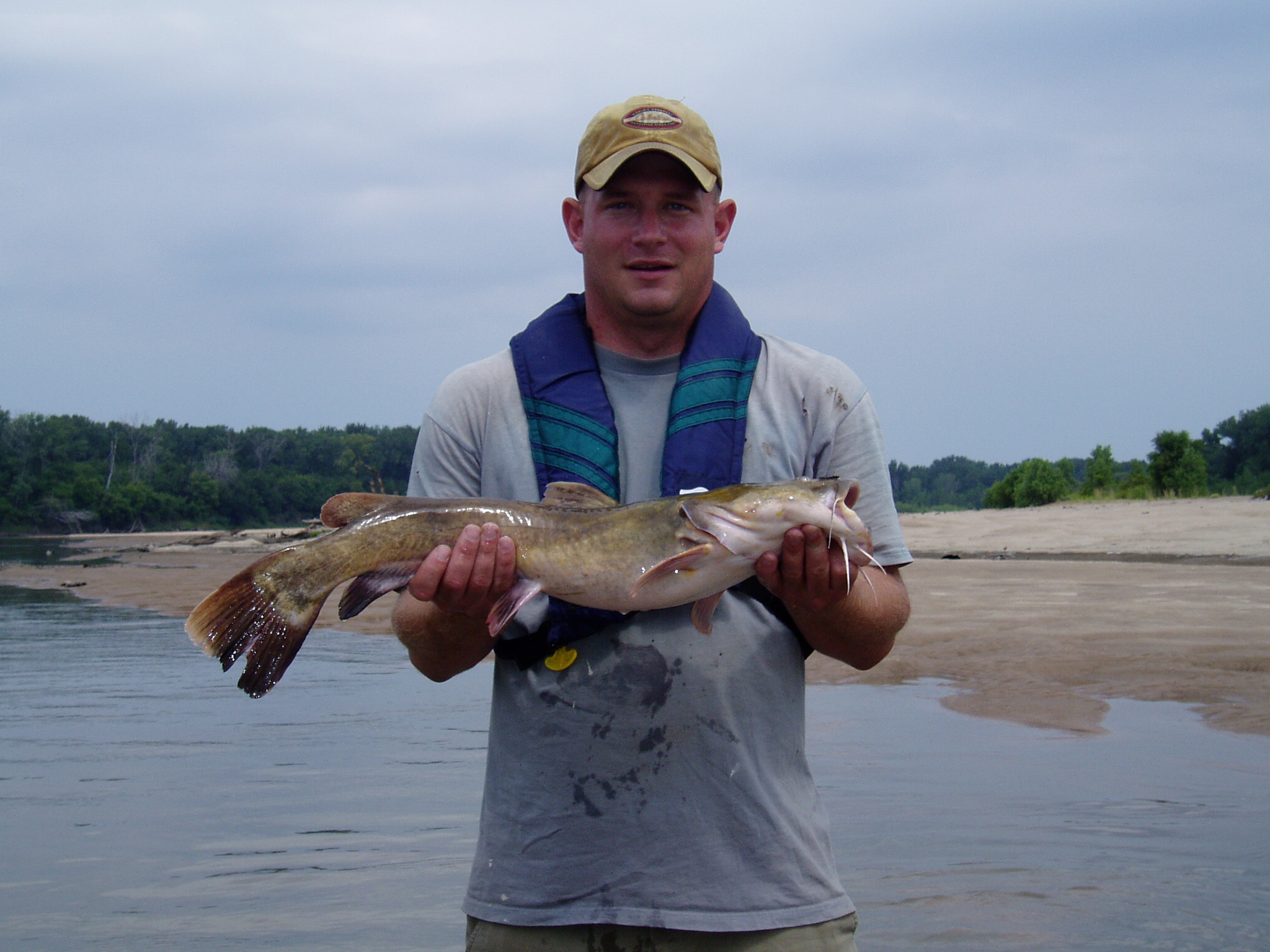Evaluation of lathead catfish populations in the Kansas River
Investigators: 
Andy Makinster, M.S. Student
Dr. Craig Paukert
Project Supervisor:
Dr. Craig Paukert
Funding:
Kansas Department of Wildlife and Parks
Location:
Flint Hills stream in Northeast Kansas
Completion:
2006
Objectives:
To determine the abundance, distribution, size structure, growth, and movement of flathead catfish in the Kansas River from Kansas City to Junction City, Kansas.
Assess various management alternatives (e.g., length limits) for flathead catfish using simulation modeling.
Progress and Results:
We investigated the spatial variation of flathead catfish Pylodictis olivaris relative abundance, condition, size structure, growth, and total annual mortality in the 274-km Kansas River. A randomized, electrofishing regime was used to collect fish throughout the river between May-August, 2005-2006. Relative abundance of age 1 fish (< 200 mm), subadult (> 200-400 mm), and adult fish (> 400 mm) ranged from 0.34 to 14.67 fish per hour, with lowest abundance of all sizes of fish occurring in the lowermost river segment. Increased abundance of age 1 flathead catfish appeared to be related to availability of riprap habitats, but no relation was found among larger fish. Body condition (relative weight) decreased with increased fish size and was consistent across river segments. Proportional stock density (PSD) remained consistent across all river segments ranging from 21 to 75. Mean length at age 3 ranged from 293 to 419 mm total length among river segments with the slowest growth occurring in the lowermost segment and fastest growth in upper segments of the river. Total annual mortality estimated from catch curves followed a similar trend and varied from 11-28% throughout the river with exploitation likely < 10% based on tag returns. Discriminant function analysis suggested flathead catfish abundance and growth differed among four reaches of the Kansas River. Simulation modeling of 305 mm, 610 mm, and 762 mm minimum length limits revealed PSD and relative stock density of preferred-sized fish (RSD-P) declined substantially (> 25 PSD units and > 15 RSD-P units) as exploitation increased regardless of river reach, suggesting different regulations among reaches was not needed. No substantial differences were observed in flathead catfish size structure with the 610 and 762 mm length limits among reaches; however, anglers would have to sacrifice about 50% of the number flathead catfish harvested under current mortality conditions with a 610 mm length limit. Estimated mortality caps revealed that each reach could sustain about 60% and 55% total annual mortality to maintain current PSD and RSD-P levels, respectively. Spatial differences in population dynamics need to be considered when evaluating riverine fish populations. Maintaining a quality fishery for flathead catfish in the Kansas River may require more restrictive harvest regulations if exploitation increases.
Products:
Makinster, Andrew (M.S. 2006; advisor Paukert) Flathead Catfish Population Dynamics in the Kansas River. M.S. Thesis, Kansas State University, Manhattan, KS.
White, K., J. Gerken, C. Paukert, and A. Makinster. In press. Fish community structure in natural and engineered habitats in the Kansas River. River Research and Applications.
White, K., J. Gerken, C. Paukert, and A. Makinster. 2010. Fish community structure in natural and engineered habitats in the Kansas River. Kansas Natural Resources Conference, Wichita, KS.